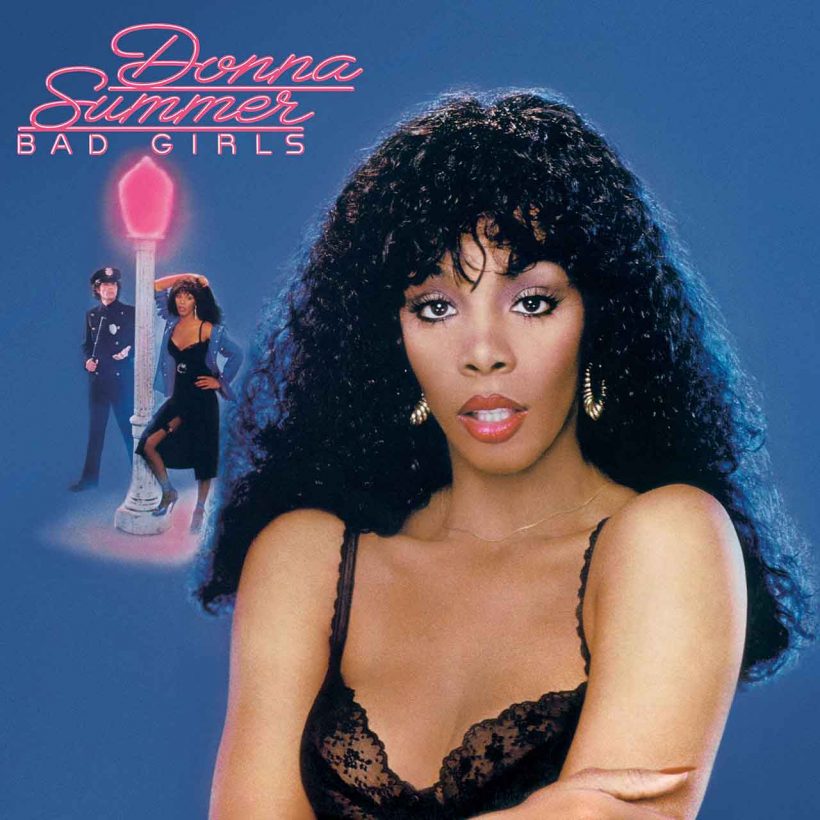‘Bad Girls’: Donna Summer’s Expansion On Disco
On her best-selling studio album, Summer began to bring new influences into the disco sound that had made her a star.

By 1979, Donna Summer had cemented her status as the “queen of disco.” Singles like “Love To Love You Baby” and “I Feel Love” had taken her into the upper echelons of the charts and made her a global star. She’d also gained a reputation as a master of the double album through 1977’s Once Upon A Time, a record that was described by critic Robert Christgau upon release as the first “disco opera.”
Once Upon A Time showed the star’s burgeoning creativity, taking the rags to riches themes of Cinderella and setting them to the sounds of the disco zeitgeist. All of the album’s tracks were co-written by Summer and her producers, Giorgio Moroder and Pete Bellotte, with whom she’d worked as a trio since 1976’s A Love Trilogy.
Listen to Donna Summer’s Bad Girls now.
Work began on Bad Girls in December 1978, with the singer teaming up with Moroder and Bellotte once more. The sessions, which spanned four months, were prolific. Instead of following the usual album-making approach of writing, demoing, and then recording a final version, the team would come up with ideas for melodies and hooks, flesh them out into full songs and then hit the booth immediately to record them.
“As soon as I was done with the mix of one song, we went right in and recorded,” Moroder explained in the liner notes of Bad Girls’ deluxe reissue in 2003. “While I was recording Donna… Pete would be recording a basic track for another song. But we had our sounds; we were on a roll. Donna is a great artist, very easy to work with. She could complete two or three songs a day, easily, without straining her voice or getting tired.”
Disco’s reigning queen shook things up sonically on Bad Girls, too, taking her sound into new territory while keeping that dancefloor sparkle intact. With rock’s ascendance on the charts, Summer leaned into heavier sounds, merging chugging riffs with the disco style she had become synonymous with. It was a combination that worked spectacularly – not least on the single “Hot Stuff,” which went on to earn her the Grammy for Best Female Rock Vocal Performance in 1980.
While Bad Girls is undoubtedly heavier than her previous albums, there are also more soulful, R&B-based moments. Ballad “On My Honor” dropped the strutting rhythms and upbeat hooks for something more timeless and classic, as Summer vowed to do her best for her husband. Much of the album’s second half followed suit, providing an emotional counterbalance to its beginning.
If Summer was already a star before Bad Girls was released, the double album made her burn even brighter. After just one week of release, it was certified platinum by the RIAA. It topped the Billboard 200 for six weeks and the R&B Albums chart for three. It also spawned two Billboard Hot 100 No.1 singles – “Hot Stuff” and the title track – and one No.2, “Dim All The Lights.” Summer became the first female artist to have two songs in the Top Three of the Hot 100 at one time. Later, the album was listed in Rolling Stone’s 50 greatest albums by women, with the publication saying that Summer “pull[ed] out all the stops for an album that sums up Seventies radio, from ladies-choice smooch jams to filthy funk.”
The record, which has now sold over four million copies worldwide, also laid the foundations for more experimentation to come in Summer’s discography. Her next album – 1980’s The Wanderer, her first for Geffen Records – lived up to its roaming title and ventured further into rock and new wave, while future records explored synth-pop, gospel, and more.













Mark Lesser
April 25, 2024 at 8:10 pm
Donna is THE GOAT & so much more than disco. Her ballads are amazing & she could sing anything ! Barbra Streisand said Donna was the best duet partner she ever had due to her magnificent voice & dedication. I saw Donna live 3x & wish it had been more!